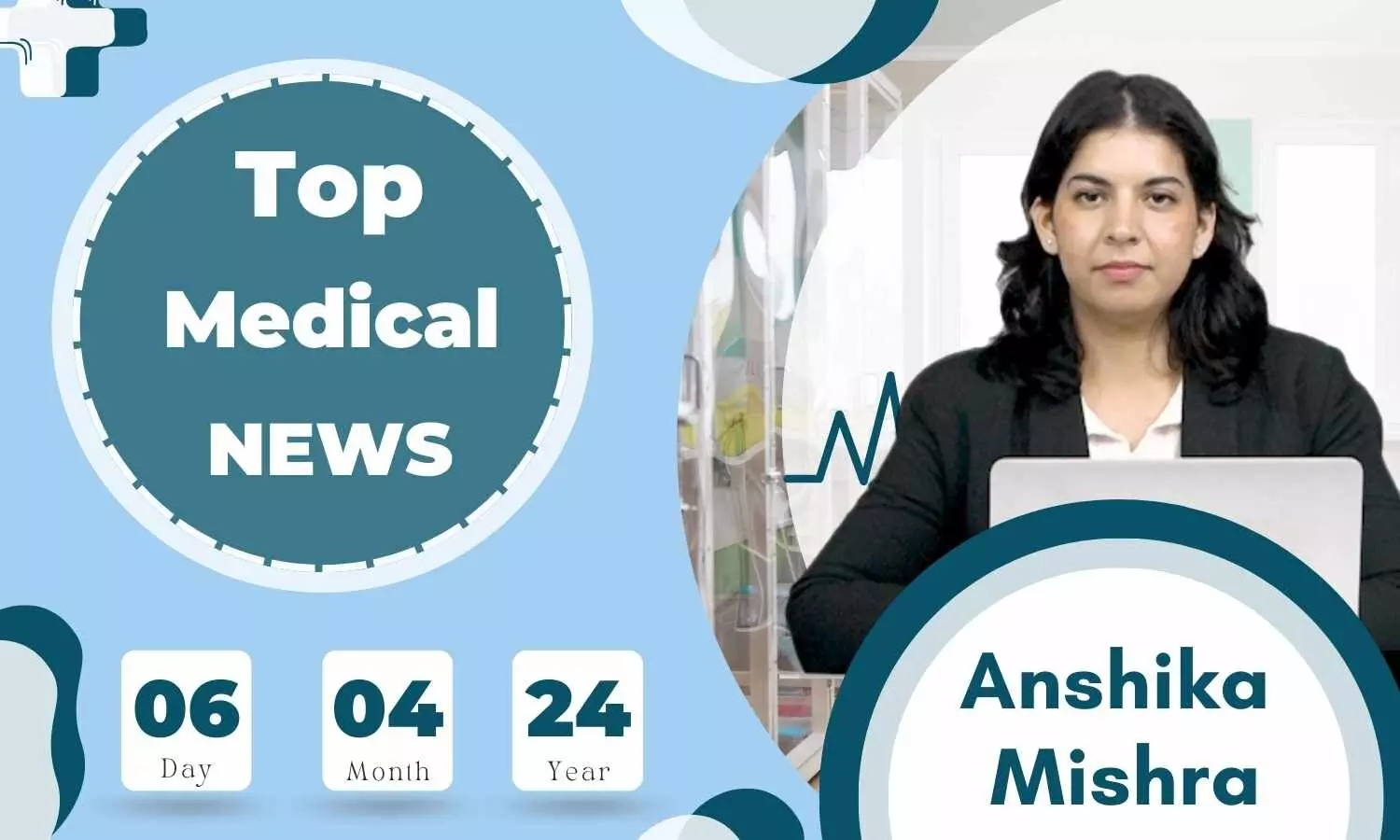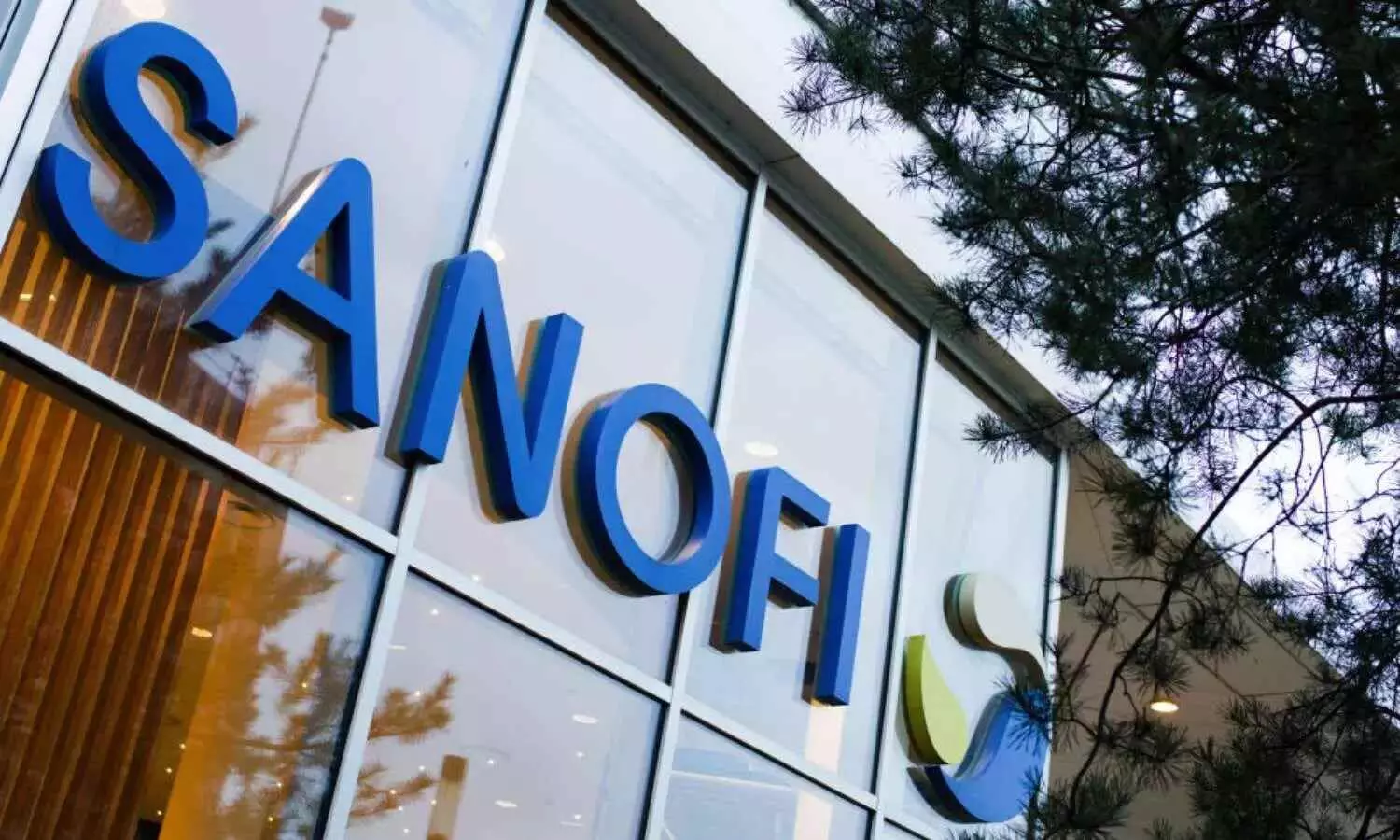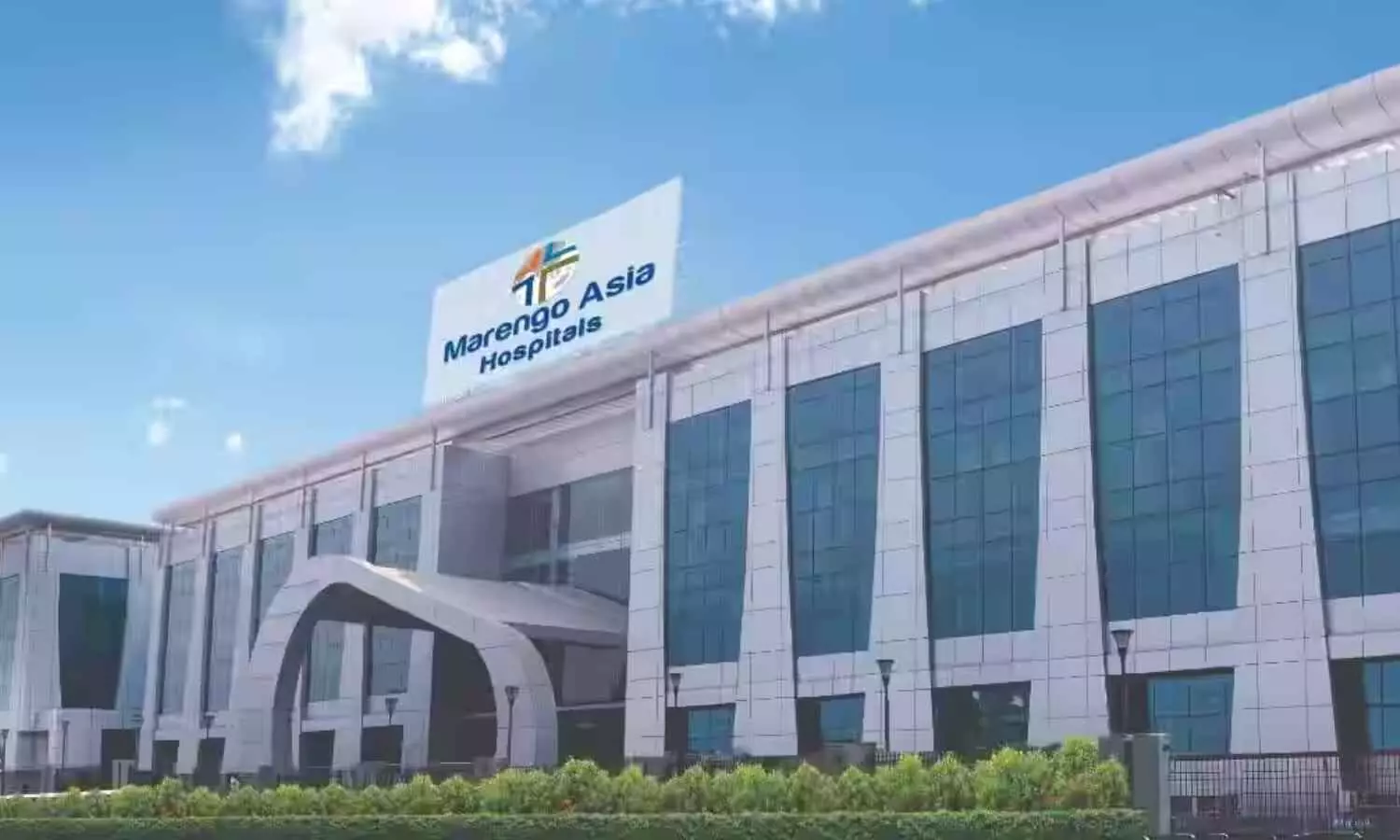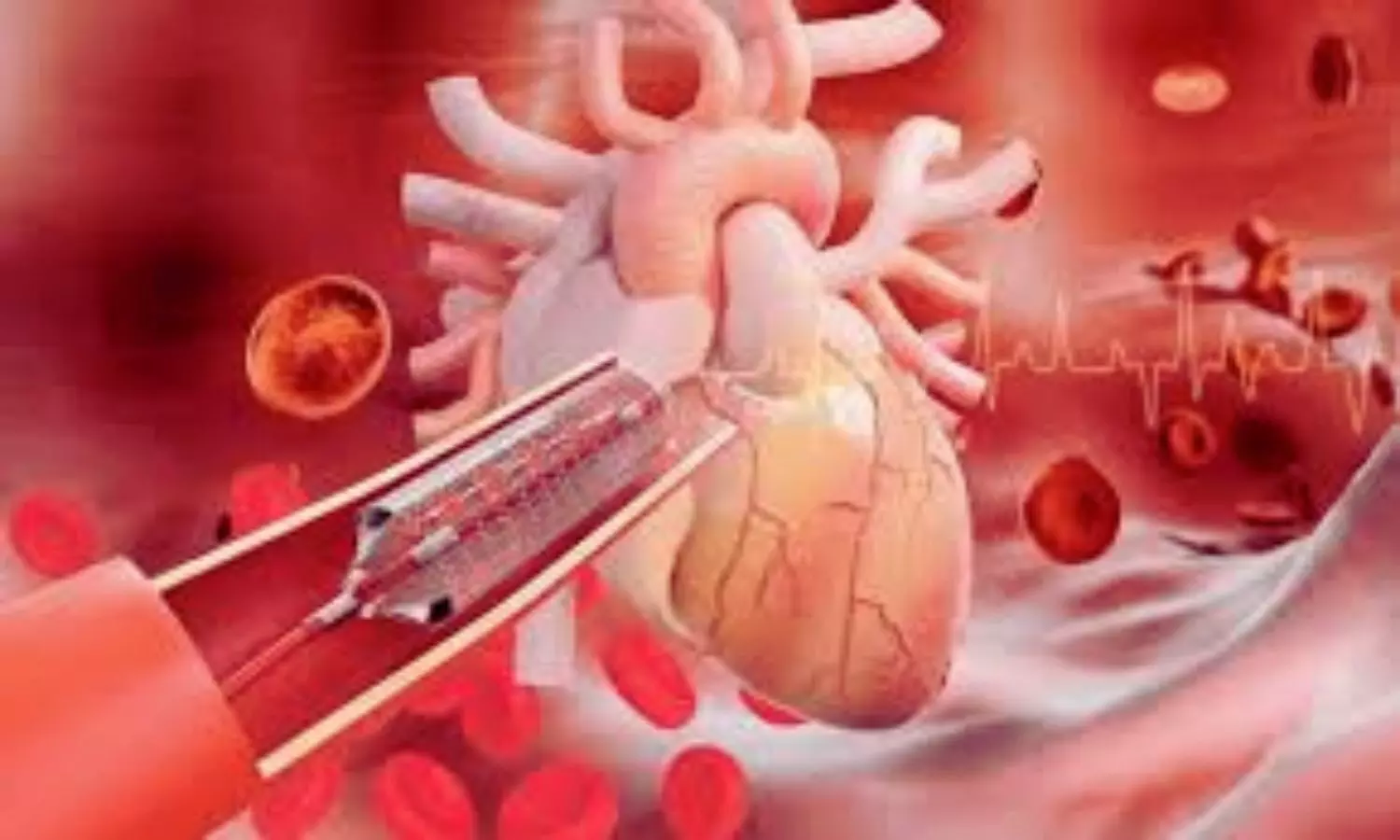Medical Bulletin 06/ April/ 2024

Here are the top medical news for the day:
Study finds prebiotics and probiotics effect on depression and obesity
Powered by WPeMatico

Here are the top medical news for the day:
Study finds prebiotics and probiotics effect on depression and obesity
Powered by WPeMatico

New Delhi: Drug giant Sanofi has received a nod for an alternative injectable vaccine, IMOVAX-Polio, to replace the widely used Inactivated Polio Vaccine (IPV) ShanIP in the India.
IMOVAX-Polio shares the same composition and formulation as ShanIPV. It has been employed in over 100 countries for more than 40 years.
“We wish to assure all stakeholders that there will be no shortage of IPV vaccines in India on our account, towards safeguarding the nation’s status of remaining polio-free. We remain fully committed to fulfilling our public health mission in India,” a Sanofi India spokesperson told PTI.
To ensure the adequate availability of the IPV vaccines, the Company has already received approvals for IMOVAX-Polio.
“…Sanofi has had to adapt its strategy and portfolio to these (emerging) trends. Accordingly, Sanofi Healthcare India Pvt Ltd (SHIPL) announced that by the end of 2023, it will discontinue ShanIPV, which was only filled and packaged at our factory in Hyderabad, India,” the spokesperson added.
ShanIPV, a trivalent inactivated injectable vaccine was launched in 2015 in India. It was administered in two stages- at six weeks and 14 weeks of age under the government’s immunization programme.
Sanofi, along with Serum Institute of India, has been at the forefront of supplying IPV vaccines in the country.
Read also: AstraZeneca-Sanofi Beyfortus approved in Japan for prevention of RSV disease in infants
Powered by WPeMatico

Hyderabad: Dr
Reddy’s Laboratories Ltd. and Bayer announced that both
companies have entered into a partnership to market and distribute a second
brand of Vericiguat in India.
Under the terms of this agreement, Bayer has
granted non-exclusive rights to Dr. Reddy’s under the brand name Gantra.
Vericiguat,
a soluble guanylate cyclase (sGC) stimulator, in India, is indicated, along
with guideline-based medical therapy, in adults with symptomatic chronic heart
failure with reduced ejection fraction (less than 45%), following a recent
event of worsening heart failure which required hospitalization or outpatient
intravenous (IV) diuretics. Vericiguat works on a
pathway not currently targeted by existing heart failure treatments and can
reduce the combined risk of cardiovascular death and heart failure
hospitalization in such patient. India has between
8-10 million people with heart failure, making it one of the largest populations
with this condition.
Shweta
Rai, Managing Director, Bayer Zydus Pharma and Country Division Head (CDH) for
Bayer’s Pharmaceuticals Business in South Asia said, “Despite therapy,
chronic heart failure patients can experience disease progression that disrupts
their lives and leads to worsening heart failure events. Vericiguat can help
slow down disease progression, reduce hospital admissions and improve their chances of survival. The introduction of
a second brand of vericiguat in India, through our partnership with Dr. Reddy’s
is a reaffirmation of our commitment to making innovative healthcare solutions
accessible to as many patients as possible. We are excited about the possibilities this
partnership with Dr. Reddy’s presents in improving health outcomes for patients
with chronic HF, following a recent event of worsening heart failure.”
M.V. Ramana, Chief
Executive Officer, Branded Markets (India and Emerging Markets), Dr Reddy’s
said, “Strengthening our chronic therapy portfolio in India continues to be
a focus area for us. Vericiguat is a first-in-class sGC stimulator indicated
for adults with symptomatic, chronic HF and ejection fraction less than 45%
following worsening heart failure. The addition of Vericiguat bolsters our
heart failure management portfolio that includes Cidmus, Daplo and beta
blockers. The partnership with Bayer is part of Dr. Reddy’s continuous efforts
to make innovative medicines available to patients in India through strategic
collaborations. We will use our strengths in marketing and distribution to
widen access to this novel treatment in metros and beyond into tier-I and
tier-II towns in India.”
Powered by WPeMatico
Powered by WPeMatico
Powered by WPeMatico
Powered by WPeMatico
Powered by WPeMatico
Powered by WPeMatico

Gurugram: A 30-year-old man suffering from multiple traumatic experiences till he attained 16 years of age due to domestic abuse was successfully treated by the doctors at the Marengo Asia Hospitals Gurugram through a key hole surgery.
The comprehensive approach taken by Marengo Asia Hospitals Gurugram, led by Dr Himanshu Champaneri, highlights the importance of a multidisciplinary team in addressing such cases.
He developed symptoms of post-traumatic stress disorder from the time he turned 17 years of age. *Dr Himanshu Champaneri, Sr Consultant, Neurosurgery, Marengo Asia Hospitals Gurugram treated the patient.
The patient was diagnosed with Refractory PTSD with Dyscognitive epilepsy. Refractory PTSD with dyscognitive epilepsy refers to a complex medical condition where an individual experiences both post-traumatic stress disorder (PTSD) and dyscognitive epilepsy that does not respond well to conventional treatments.
The disorder manifests itself in the form of memory intrusions, inability to focus, avoiding situations and contacts that will remind him of his traumatic experiences, isolation, and difficulty in establishing and maintaining relations.
The patient’s immediate relief and improved quality of life following surgery highlight the effectiveness of the intervention. His ability to engage in daily activities and envision a future free from the burden of his conditions speaks volumes about the impact of appropriate treatment.
The patient had sought medical therapies before coming to India which helped him for a certain time, when the symptoms recurred. But this affected his daily life, education, and ability to learn/concentrate. He even attempted suicide two times and was treated with medical therapy, psychotherapy, and EMDR (eye movement desensitization and reprocessing), but his symptoms continued.
He developed dyscognitive epilepsy in which he would have sudden episodes of blankness when he would lose the ability to respond to his surroundings, questions, or any dangers. Such episodes would occur anytime when he was traveling, standing at the subway station, in class, or even alone and affected his daily life as he was unable to pursue any growth in his education/profession.
When he sought treatment at Marengo Asia Hospitals Gurugram, he was evaluated by a team of psychiatrists, functional neurosurgeons, and Neurologists. When asked to revisit his traumatic memories, the functional MRI showed active signals in the right amygdala, which is expected in cases of severe refractory post-traumatic stress disorder. The non-dominant side was confirmed as right side. The rationale for intervention was to intervene at the non-dominant amygdala, which is a center for memory and fear. In cases of refractory PTSD, the non-dominant amygdala becomes hyperactive, leading to memory intrusions and giving rise to dyscognitive seizures.
The keyhole surgery was performed using stereotactic radiofrequency ablation. This procedure is performed by identifying the hyperactive target, the right amygdala in this case. The surgery is performed while the patient is awake to ensure that we have reached the right target and that there are no neurological side effects.
During the surgery, when the amygdala was stimulated and ablated, the patient felt sudden relief of tension, he felt happy memories and relaxation of muscles which he had not experienced for many years. This confirmed the success of the surgery and ablation of the right area. A post-operative MRI scan additionally confirmed this.
According to an IANS report, After the surgery, the patient remained in a very relaxed and happy state and was able to focus on tasks that had not been possible before. He was able to read books, focus on videos, and think about his future with such clarity, which he had not experienced for many years. He did not have any episodes of dyscognitive seizures after the surgery and he had complete relief from the post-traumatic stress disorder.
Dr Himanshu Champaneri, Senior Consultant Neurosurgeon, at Marengo Asia Hospital Gurugram, said,, “When someone has both refractory PTSD and dyscognitive epilepsy, it can pose significant challenges in diagnosis and treatment. The presence of one condition can exacerbate the symptoms of the other, leading to a complex clinical picture. Managing this condition typically involves a multidisciplinary approach, including mental health professionals, neurologists, and possibly other specialists, to address both the psychiatric and neurological aspects of the disorder. Treatment may involve a combination of medication, psychotherapy, and possibly other interventions such as neuromodulation or lifestyle modifications.”
Neeta Rajwar, Facility Director, Marengo Asia Hospitals Gurugram says, “Our clinicians constantly endeavor to break the ceiling to go beyond borders to treat patients who come to us. Within the comprehensive realm of health and wellness, prioritizing mental health is equally vital to physical well-being. These facets are intertwined, each influencing the other’s welfare. While research findings may differ, data from India indicates that approximately 20% of adults grapple with various mental health challenges. Globally, mental health is swiftly becoming a growing area of concern. Unchecked mental disorders can lead to disastrous diseases such as epilepsy”, reports IANS.
WHO studies estimated that the burden of mental health problems in India is 2443 disability-adjusted life years (DALYs) per 100 000 population; the age-adjusted suicide rate per 100 000 population is 21.1. close to 60 to 70 million people in India suffer from common to severe mental disorders. A study has shown that children who have experienced child abuse or neglect are four times more likely to develop serious mental illness. And yet, there are many reasons why people do not seek treatment for mental illness, including stigma, lack of awareness still very low even among the literate, and lack of access to resources.
Powered by WPeMatico

Korea: A subgroup analysis of the RENOVATE-COMPLEX-PCI trial including 1639 patients showed no significant interaction between treatment strategy and sex in patients undergoing complex PCI with the treatment benefit of intravascular imaging–guided PCI.
“In the analysis, intravascular imaging guidance was associated with reducing the risk of target vessel failure in both women and men,” the researchers reported in JAMA Cardiology. “There was no significant interaction between treatment strategy with intravascular imaging-guided percutaneous coronary intervention (PCI) and sex.”
Previous studies revealed that women often had worse clinical outcomes after PCI than men. Potential causes for this discrepancy were suggested to be older age, atypical presentation, and a higher number of underlying risk factors in women. Recent studies also found that women tend to experience a higher incidence of adverse outcomes after PCI of complex coronary artery lesions, however, these differences were minimized after adjusting for underlying risk factors.
There have been heterogeneous results related to sex differences in prognosis after PCI for complex coronary artery lesions. Therefore, Ji Hyun Cha, Sungkyunkwan University School of Medicine, Seoul, Korea, and colleagues aimed to evaluate potential differences in outcomes with intravascular imaging–guided PCI of complex coronary artery lesions between men and women.
For this purpose, the researchers conducted a prespecified substudy to evaluate the interaction of sex in the RENOVATE-COMPLEX-PCI randomized clinical trial. The trial, conducted at 20 sites in Korea, evaluated patients with complex coronary artery lesions treated by PCI. It showed superior clinical outcomes following intravascular imaging–guided PCI versus angiography-guided PCI.
Patients with complex coronary artery lesions undergoing PCI were enrolled between 2018 and 2021, and the median follow-up period was 2.1 years.
Following diagnostic coronary angiography, eligible patients were randomly assigned in a ratio of 2:1 to receive intravascular imaging–guided PCI or angiography-guided PCI. The timing and choice of the intravascular imaging device were left to the operators’ discretion. Of 1639 included patients, 20.7% were women, and the mean age was 65.6 years.
The study’s primary endpoint was target vessel failure, defined as a composite of target vessel-related myocardial infarction, cardiac death, or clinically driven target vessel revascularization. Secondary endpoints were individual components of the primary endpoint.
Based on the analysis, the researchers reported the following findings:
In conclusion, intravascular imaging versus angiographic guidance was associated with a similar reduction in the risk of target vessel failure among women and men among patients undergoing complex PCI. The treatment benefit of imaging-guided PCI showed no significant interaction between sex and treatment strategy.
Reference:
Cha JH, Lee JM, Choi KH, et al. Intravascular Imaging–Guided Optimization of Complex Percutaneous Coronary Intervention by Sex: A Subgroup Analysis of the RENOVATE-COMPLEX-PCI Trial. JAMA Cardiol. Published online April 03, 2024. doi:10.1001/jamacardio.2024.0291
Powered by WPeMatico
